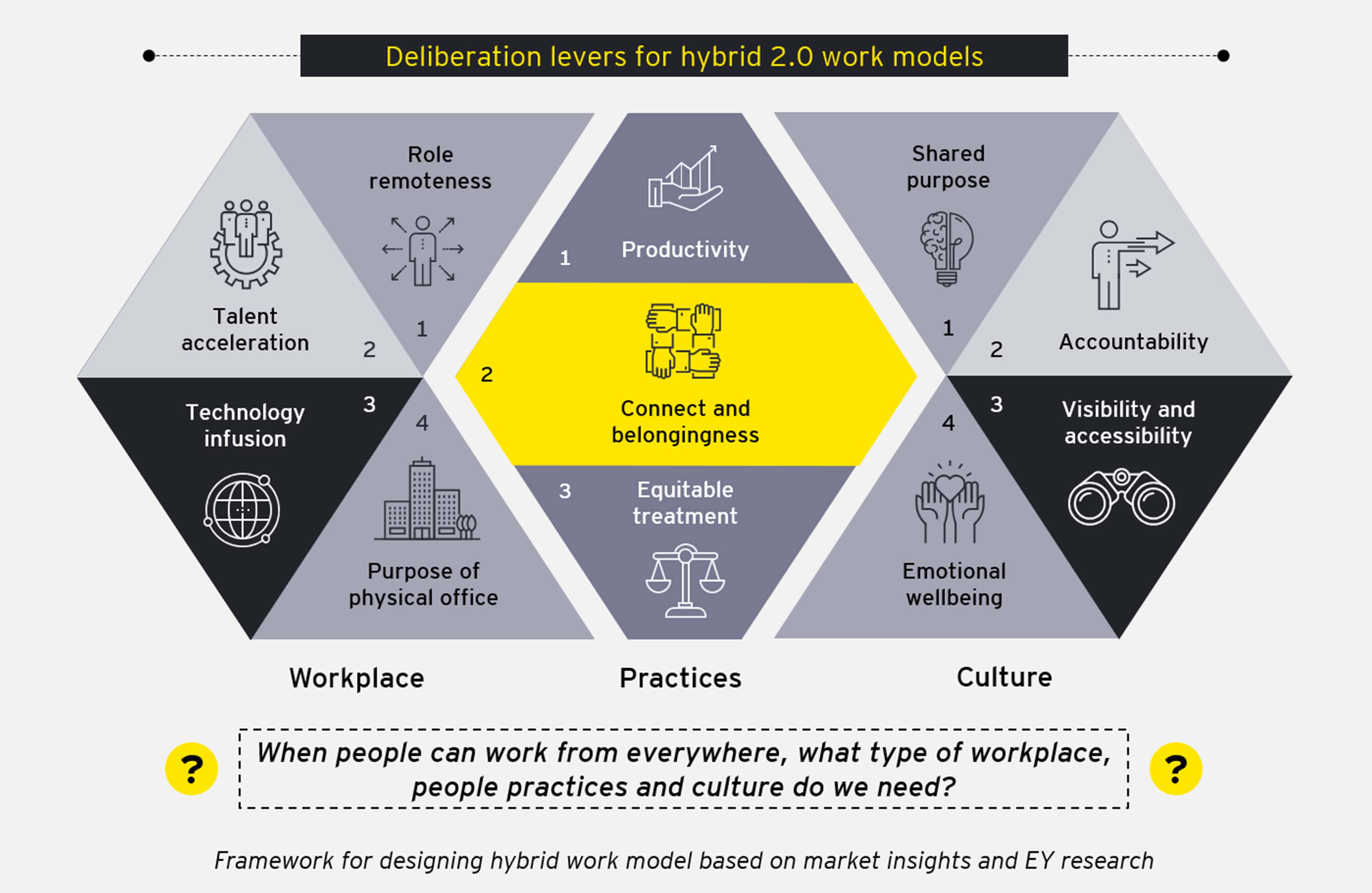The needs of people, employees and customers have been and continue to be dramatically reshaped by the pandemic. The e-commerce industry is riding the wave of change, transforming itself to retain competitiveness in the new world order.
This creates a pivotal opportunity for leaders to reimagine the organizational landscape, along the key levers of workplace, culture and people practices, and define the future of work. While the eventual design of each hybrid model will be different, based on the business’s unique context, it is critical to fully understand, thoroughly deliberate and carefully conceive each of the contributing factors that lead to a supportive workplace, enabling culture and sustainable people practices.
There is no ‘one-size-fits-all approach’ for bringing employees back to work. Companies are testing which strategy fits best for their business, culture, and long—term success. There is substantial value to be unlocked via the right hybrid workforce model.
The uncertain pace and inconsistent needs of the external and internal environment demands direct action and close involvement of the top leadership and subsequently, their next—in—lines. The leadership needs to listen (gather data on workforce, business and environment), align (agree on the future blueprint) and act (lead and measure enterprise—wide change). This exercise needs to be carried out in iterative cycles to continuously sharpen their hybrid workforce models, in order to ensure that it yields the desired results on business and people related fronts.
Hybrid working model
Related content
Summary
A successful hybrid working model is the need of the hour as employers and employees have been experiencing never—seen—before disruptions in the world of work over the past year and a half. Most organizations are experimenting with initiatives and strategies to perfect this new future workforce model. However, in many cases they are disjointed, point—in—time, reactionary efforts which may not lead to a holistic, proactive and forward—looking solution.



